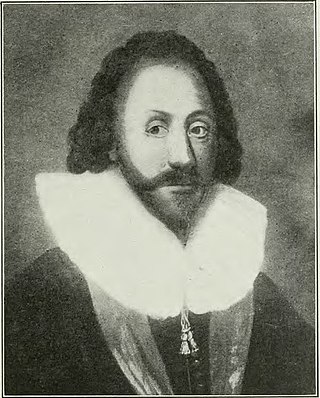
Sir Thomas Wise, KB, of Sydenham in the parish of Marystow and of Mount Wise in the parish of Stoke Damerel in Devon, was Sheriff of Devon in 1612 and in 1621 served as a member of parliament for Bere Alston in Devon.

Nutwell in the parish of Woodbury on the south coast of Devon is a historic manor and the site of a Georgian neo-classical Grade II* listed mansion house known as Nutwell Court. The house is situated on the east bank of the estuary of the River Exe, on low-lying ground nearly contiguous to the water, and almost facing Powderham Castle similarly sited on the west bank. The manor was long held by the powerful Dynham family, which also held adjacent Lympstone, and was according to Risdon the site of their castle until John Dynham, 1st Baron Dynham (1433–1501), the last in the male line, converted it into "a fair and stately dwelling house".

Sir John Hele of Wembury in Devon, serjeant-at-law, was a Member of Parliament for Exeter and was Recorder of Exeter (1592–1605). He was one of Prince's Worthies of Devon (1701). He built at Wembury one of the grandest manor houses ever seen in Devon, called by his near contemporary Risdon : "A magnificent house, equalling, if not exceeding, all other in these western parts, for uniform building; a sightly seat for shew; for receipt spacious; for cost sumptuous; for sight salubrious". It was already a ruin by about 1700, and was finally demolished in 1803. He founded a boys' hospital in Plymouth. His monument and effigy survives in Wembury Church.
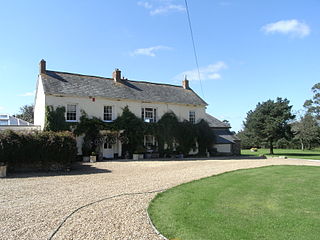
Way is a historic estate in the parish of St Giles in the Wood, Devon. It is situated about 2 miles (3.2 km) north-east of the village of St Giles in the Wood and about 4 miles (6.4 km) north-east of the town of Great Torrington. It was described by Hoskins (1959) as "the fons et origo of the mighty tribe of Pollard" and had been acquired by them from the de la Way family at some time before 1242.
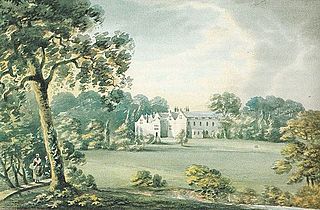
Little Fulford was a historic estate in the parishes of Shobrooke and Crediton, Devon. It briefly share ownership before 1700 with Great Fulford, in Dunsford, about 9 miles (14 km) to the south-west. The Elizabethan mansion house originally called Fulford House was first built by Sir William Peryam (1534–1604), a judge and Lord Chief Baron of the Exchequer. It acquired the diminutive epithet "Little" in about 1700 to distinguish it from Fulford House, Dunsford and was at some time after 1797 renamed Shobrooke House, to remove all remaining confusion between the two places. Peryam's mansion was demolished in 1815 and a new house erected on a different site away from the River Creedy. This new building was subsequently remodelled in 1850 in an Italianate style. It was destroyed by fire in 1945 and demolished, with only the stable block remaining today. The landscaped park survives, open on the south side to the public by permissive access, and crossed in parts by public rights of way, with ancient large trees and two sets of ornate entrance gates with a long decorative stone multiple-arched bridge over a large ornamental lake. The large pleasure garden survives, usually closed to the public, with walled kitchen garden and stone walls and balustrades of terraces. The park and gardens are Grade II listed in the National Register of Historic Parks and Gardens. The estate was the home successively of the families of Peryam, Tuckfield, Hippisley and lastly the Shelley baronets, in whose possession it remains today.

Peamore is a historic country estate in the parish of Exminster, Devon, which is near the city of Exeter. In 1810 Peamore House was described as "one of the most pleasant seats in the neighbourhood of Exeter". The house was remodelled in the early 19th century and is now a grade II listed building, set in grade II listed parkland.

Henry Hippisley Coxe (1748-1795) of Ston Easton Park, Somerset, was MP for Somerset (1792-5).

Creedy is an historic estate in the parish of Sandford, near Crediton in Devon. It is named from its location on the west side of the River Creedy. It was the seat of the Davie family from about 1600 until the late 20th century. The mansion house on the estate has been called at various times New House, Creedy House, and as presently, Creedy Park. It was first built in about 1600, rebuilt in 1846, burnt down in 1915 and rebuilt 1916–21. It is surrounded by a large park, the boundary of which is enclosed by a stone and brick wall several miles long.

Edward Yarde (1669–1735), of Churston Court in the parish of Churston Ferrers in Devon, England, was a Member of Parliament for Totnes in Devon 1695–1698.
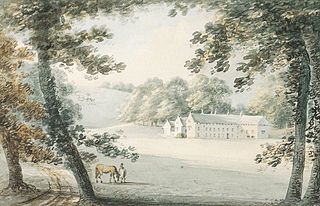
Stephen Northleigh (?1692-?1731), of Peamore, Exminster, Devon, was an English politician who sat in the House of Commons from 1713 to 1727.

Sharpham is an historic estate in the parish of Ashprington, Devon. The Georgian mansion house, known as Sharpham House, overlooks the River Dart and is a Grade I listed building. The house was commenced in about 1770 by the Royal Navy captain Philemon Pownoll to the designs of the architect Sir Robert Taylor (1714–1788). In the opinion of Nikolaus Pevsner it contains "one of the most spectacular and daring later 18th century staircase designs anywhere in England". The park and gardens are Grade II* listed in the National Register of Historic Parks and Gardens. Part of the descent of Sharpham is shown on the Palmes family heraldic pedigree roll.

Soldon in the parish of Holsworthy Hamlets, Devon, England, is a historic estate, a seat of the Prideaux family. The manor house is a grade II listed building dating from the mid-16th century with later alterations. It was sold in 2014 as an eight bedroomed house with an acre and a half of grounds for an asking price of £750,000.
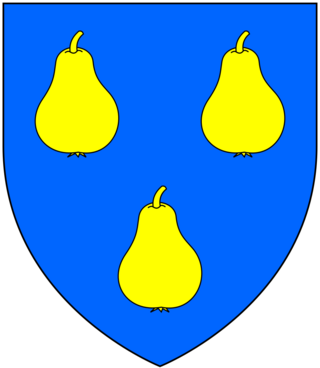
Sir Hugh Stucley (1496–1559) was the lord of Affeton in Devon, and Sheriff of Devon in 1545. His third son was Thomas Stukley, known as "The Lusty Stucley".

Sir William Davie, 4th Baronet (1662–1707) of Creedy in the parish of Sandford, near Crediton in Devon, inherited the Davie baronetcy and the Davie estates from his elder brother Sir John Davie, 3rd Baronet (1660–1692), MP for Saltash 1679–85 and Sheriff of Devon in 1688, who died unmarried at the age of 32.
Sandridge is an historic estate in the parish of Stoke Gabriel in Devon, situated on high ground at the head of the River Dart estuary. The estate was originally encompassed on three sides by the river, which meanders along its border, leaving it on the east side. The present grade II* listed Italianate style Regency mansion house known as Sandridge House was built in 1805 by Lady Ashburton, to the design of John Nash.

Henry Northleigh (1643–1694) of Peamore in the parish of Exminster in Devon, was the MP for Okehampton in Devon.

John Fownes (1661–1731) of Kittery Court in the parish of Kingswear and of Nethway in the parish of Brixham, both in Devon, was a British landowner and politician who sat in the House of Commons from 1714 to 1715.

Weycroft is an historic manor in the parish of Axminster in Devon, England. The surviving manor house known as "Weycroft Hall" is a Grade I listed building which includes elements from the 15th, 16th and 17th centuries, with a great hall of circa 1400, and was restored in the 19th century.
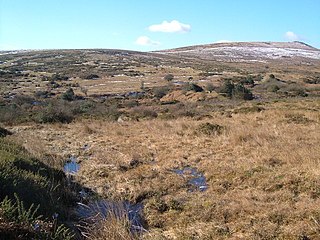
Bagtor is a historic estate in the parish of Ilsington in Devon, England. It was the birthplace of John Ford the playwright and poet. The Elizabethan mansion of the Ford family survives today at Bagtor as the service wing of a later house appended in about 1700.

John Woolcombe (1680–1713) of Pitton in the parish of Yealmpton in Devon, was a Member of Parliament for Plymouth in Devon 1702–5, and served as Sheriff of Devon in 1711–12.



















